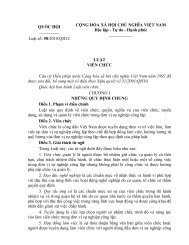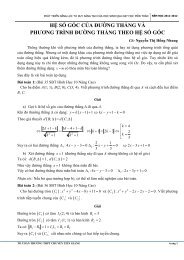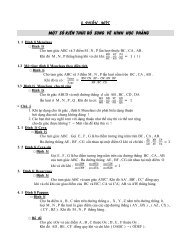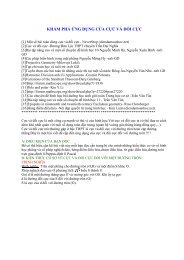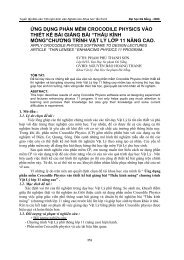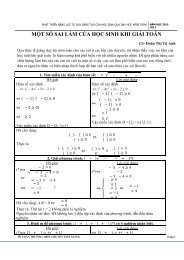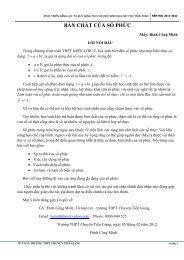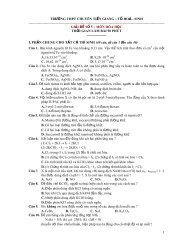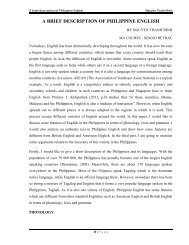103 Trigonometry Problems
103 Trigonometry Problems
103 Trigonometry Problems
Create successful ePaper yourself
Turn your PDF publications into a flip-book with our unique Google optimized e-Paper software.
144 <strong>103</strong> <strong>Trigonometry</strong> <strong>Problems</strong><br />
Let x = ̸ PCB (in degrees). Then ̸ PBC = 80 ◦ − x.Bythelaw of sines or<br />
by Ceva’s theorem,<br />
1 = PA<br />
PB · PB<br />
PC · PC<br />
PA = sin ̸ PBA<br />
sin ̸ PAB · sin ̸ PCB<br />
sin ̸ PBC · sin ̸ PAC<br />
sin ̸ PCA<br />
sin 20 ◦ sin x sin 40 ◦<br />
=<br />
sin 10 ◦ sin(80 ◦ − x)sin 30 ◦ = 4 sin x sin 40◦ cos 10 ◦<br />
sin(80 ◦ .<br />
− x)<br />
The product-to-sum formulas yield<br />
and so<br />
1 = 2 sin x(sin 30◦ + sin 50 ◦ )<br />
sin(80 ◦ − x)<br />
= sin x(1 + 2 cos 40◦ )<br />
sin(80 ◦ ,<br />
− x)<br />
2 sin x cos 40 ◦ = sin(80 ◦ − x) − sin x = 2 sin(40 ◦ − x)cos 40 ◦ ,<br />
̸ ̸<br />
by the difference-to-product formulas. We conclude that x = 40 ◦ − x, or<br />
x = 20 ◦ . It follows that ACB = 50 ◦ = BAC, and so triangle ABC is<br />
isosceles.<br />
22. Let a 0 = √ 2 + √ 3 + √ 6, and let a n+1 = a2 n −5<br />
2(a n +2)<br />
for integers n>0. Prove<br />
that<br />
( 2 n−3 )<br />
π<br />
a n = cot − 2<br />
3<br />
for all n.<br />
Solution: By either the double-angle or the half-angle formulas, we obtain<br />
cot π 24 = cos 24<br />
π<br />
sin<br />
24<br />
π = 2 cos2 24<br />
π<br />
2 sin<br />
24 π cos 24<br />
π = 1 + cos 12<br />
π<br />
sin<br />
12<br />
π<br />
= 1 + cos ( π<br />
3<br />
− π )<br />
4<br />
sin ( π<br />
3<br />
− π ) = 1 + cos π 3 cos π 4 + sin π 3 sin π 4<br />
sin π 4<br />
3 cos π 4 − cos π 3 sin π 4<br />
Hence a n = cot<br />
√<br />
4 + 6<br />
4<br />
√ √<br />
6<br />
4 − 2<br />
4<br />
= 1 + √<br />
2<br />
= 4 + √ 6 + √ 2<br />
√<br />
6 −<br />
√<br />
2<br />
= 4(√ 6 + √ 2) + ( √ 6 + √ 2) 2<br />
( √ 6 − √ 2)( √ 6 + √ 2)<br />
= 2 + √ 2 + √ 3 + √ 6 = a 0 + 2.<br />
)<br />
− 2 is true for n = 0.<br />
(<br />
2 n−3 π<br />
3<br />
= 4(√ 6 + √ 2) + 8 + 4 √ 3<br />
4





